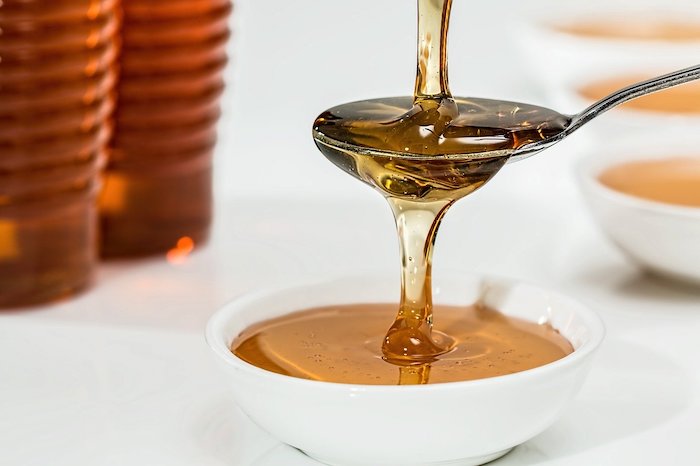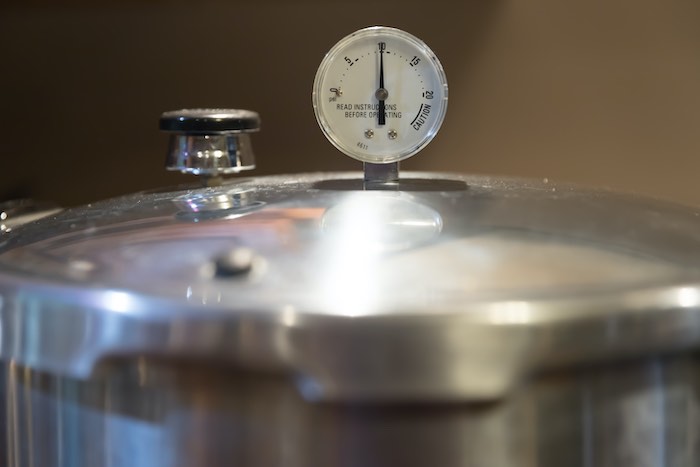The market is abundant in sweeteners produced from plant starches. These are useful for baked goods, beverages, thickening sauce consistencies, and so much more. Two of these prime sweeteners are oligo syrup and corn syrup, but how do they compare to each other?
The main differences between oligo syrup and corn syrup is their tastes and levels of healthiness. Oligo syrup is moderately sweet with a taste like butterscotch. Corn syrup is thicker, sharply sweet, and tastes a little nutty. However, many sugar-related health problems tend to crop up with the overconsumption of corn syrup, far more so than its oligo counterpart.
These are popular ingredients in commercial beverages, health drinks, candies, and other similar recipes. While they share many similarities such as sweetness and consistency, there are still some differences to note. In some recipes, though, you can easily exchange one for the other if you need to replace one for any reason.
Oligosaccharide, a.k.a. Rice Syrup

Rice syrup, otherwise known as oligosaccharide or just oligo, is a sugary syrup made from rice. Oligo sweetens food, thickens consistencies, and is a very popular ingredient in Korean cuisine. It’s not uncommon to see it in baked goods, granola bars, and gluten-free items as well.
This plant-based byproduct is low in calories, free of gluten, and has the lowest content of sugar compared to other sweeteners. It comes from natural and organic rice with a low level of glucose but a high glycemic index. This means that it’s okay for consumption by those with mild cases of diabetes as long as it’s done so in moderation.
Cooked Brown Rice Starch
The process of creating oligo syrup comes from cooked rice via starch extraction, which breaks down the enzymes to turn the rice’s starch into sugar. This substance undergoes further refinement by heating the resulting liquid. The heat reduction part of the process results in a thick, sweet syrup. While the taste is definitely sugary, it has much less sugar when you compare it to the content levels of agave nectar, sugar, or even honey.
Flavor & Nutrient Profile
Oligo has its own kind of taste. It has a moderate sweetness with a flavor of something akin to butterscotch. It also has additional nutrients not found in other sweeteners. These include things like zinc, manganese, and magnesium.
Nevertheless, it has 45 calories per tablespoon. So, while it is safer than many other artificial sweeteners, moderation is still advised.
Corn Syrup

Corn syrup comes from cornstarch and provides more sweetness than a spoonful of plain granulated sugar. It also gives food volume and a soft texture. The sweetness of corn syrup is so strong that it can change a savory dish into a sweet one with minimal effort.
People typically use corn syrup for baked goods as well as to brown certain foods and help retain a dish’s moisture. Commercial products found at the grocery store contain corn syrup because it prolongs a food’s shelf life while ensuring things like brownies, cookies, and cakes won’t go stale.
Flavor & Nutrient Profile
Corn syrup has a nutty flavor and comes packed with carbohydrates, sodium, vitamin B, zinc, calcium, and selenium. There are also 62 calories per tablespoon of corn syrup.
Unfortunately, consuming too much corn syrup can quickly lead to serious health issues such as cardiac events, dementia, and type 2 diabetes. What’s more, having an overabundance of the calories and carbohydrates found in corn syrup can cause weight gain issues along with promoting the buildup of cortisol, the stress hormone.
Oligo vs. Corn Syrup
One of the major disparities between oligo syrup and corn syrup is their tastes. Oligo is much lighter and more candy-like with butterscotch tones, whereas corn syrup is nuttier and sharply sweet.
Oligo is lower in calories than corn syrup, and its low glucose levels mean there aren’t any grains, starches, or gluten byproducts producing the fructose. This means that oligo is much friendlier to those with specific diets or other concerns, and it doesn’t present nearly as many potential health issues.
| Oligo Syrup (Rice Syrup) | Corn Syrup | |
| Calories per Tablespoon | 45 calories | 62 calories |
| Flavor | Butterscotch | Nutty |
| Ideal Foods | Beverages, coffee, baked goods, sauces, Korean cuisine | Baked goods, dairy beverages, jams, jellies, and sweet fillings |
| Gluten-Free | Yes | Maybe |
| Lactose-Free | Yes | Maybe |
| Safe for Type 2 Diabetes | No, only milder cases | No |
| Creates Potential Health Issues | No, but moderation is advisable | Yes – heart disease, diabetes, dementia, and others |
See Also:
10 Ways To Make Thai Food Spicy
What To Do With 90% Cacao Dark Chocolate
7 Uses For Leftover Turkey Brine
How To Fix Undercooked Baked Potatoes (2 Ways)


